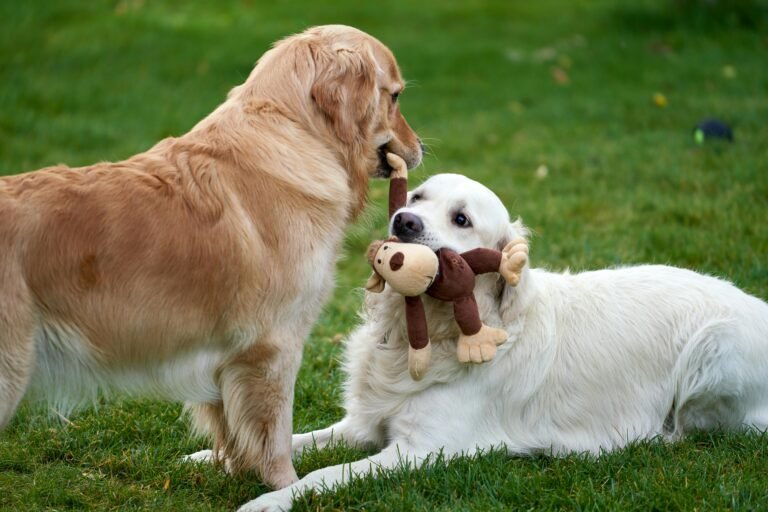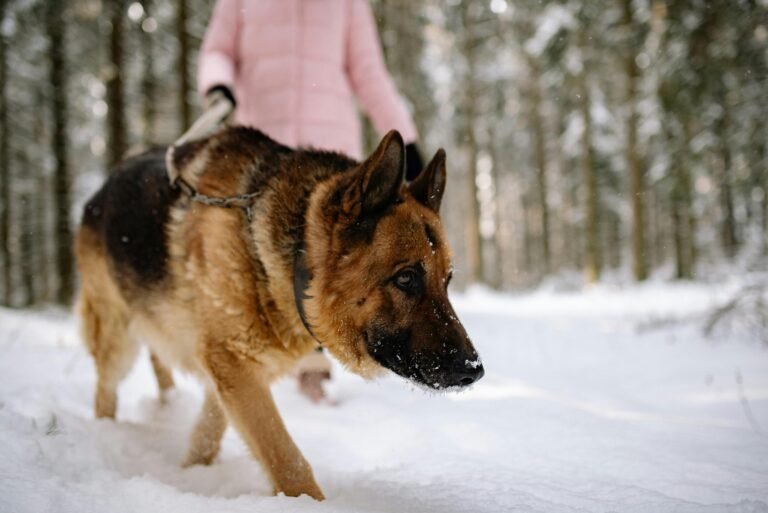Introduction
Trust is the invisible thread that binds humans and dogs together. It’s not built overnight, nor through food alone — it’s shaped through consistency, empathy, and shared experiences. Whether you’ve just brought home a rescue or are deepening your bond with a lifelong companion, understanding how dogs build trust helps you create a relationship that’s not just loving, but deeply secure. Here’s what trust really means to a dog, how they measure it, and the small, daily things that make all the difference.
Trust Through Consistency
For dogs, predictability equals safety. They thrive when the world makes sense — when meals, walks, and affection happen in reliable patterns. Every repeated act of care, every calm word, and every fulfilled promise sends the same message: “You can count on me.”
Inconsistency, on the other hand, creates uncertainty. Dogs quickly learn who’s stable and who’s unpredictable. A calm, steady approach — even when setting boundaries — builds trust faster than excitement followed by frustration. Your dog doesn’t need perfection; they need reliability.
The Role of Tone and Energy
Dogs listen to more than words — they read tone, volume, and emotion. When your voice stays gentle and steady, even during correction, they interpret it as leadership, not threat. Loud or erratic energy confuses them; they can’t understand why you’re upset, only that your emotions feel unsafe.
Trust grows when your energy tells them, “I’m calm, and I’ve got you.” That emotional steadiness helps your dog mirror confidence and relax in your presence. The more peaceful your energy, the more secure your dog feels — even in chaos.
Patience: The Core of Trust
For rescue dogs or those with trauma, trust can take months or even years. These dogs may flinch, hide, or freeze at first — not because they dislike you, but because their past taught them caution. Forcing affection or rushing progress can backfire. Instead, patience becomes your most powerful tool.
Trust grows in quiet moments — sitting near them without touching, offering treats without expectation, speaking softly until they approach on their own. Every time they move closer willingly, a thread of trust strengthens. The best part? Once a fearful dog chooses to trust you, that loyalty runs deep and lifelong.
Body Language That Builds Safety
Dogs read our body language faster than our words. Small movements — crouching instead of looming, turning sideways instead of head-on, blinking slowly instead of staring — all tell your dog, “You’re safe.” These subtle signals lower their guard and invite connection.
- Avoid direct stares: To dogs, prolonged eye contact can feel confrontational.
- Move slowly and predictably: Sudden gestures or loud noises can break fragile trust.
- Let them initiate contact: It gives them agency, which builds confidence.
When dogs realize they can approach or retreat freely, they start to relax — and that’s when trust truly begins.
Touch: From Permission to Bonding
Touch is powerful, but timing matters. A dog that trusts you will lean in or rest against you willingly; one that’s unsure may stiffen or pull away. Respecting those signals is key to building connection.
Start with neutral zones like the chest or shoulder instead of the head. Avoid hugs early on — what feels affectionate to humans can feel restrictive to dogs. Over time, as they associate your hands with calmness and safety, touch becomes one of the strongest trust builders there is.
Food, Play, and Fairness
Trust is also transactional — in a healthy way. Consistent feeding, gentle training, and fair play teach dogs that being with you leads to good things. But fairness is essential. Dogs notice when rules or expectations change suddenly. If you sometimes allow jumping but later scold for it, confusion replaces confidence.
Being fair doesn’t mean never correcting — it means being clear. A calm “no” followed by redirection teaches more than shouting ever could. Dogs respect boundaries that come from steadiness, not fear.
Shared Experiences Create Emotional Memory
Dogs remember not just commands or places, but feelings. Every walk, car ride, and play session stores emotional data. When experiences with you consistently end in safety or joy, those memories accumulate into deep trust.
That’s why adventure builds connection — exploring new parks, learning new skills, or even navigating small challenges together strengthens the bond. To your dog, you become not just a caretaker but a teammate — their anchor in every environment.
Repairing Broken Trust
Sometimes, even well-meaning owners accidentally break trust — by yelling, grabbing too quickly, or forcing interactions. The good news? Dogs are incredibly forgiving. But rebuilding takes time and empathy.
- Slow down: Don’t rush physical contact after a scare. Give space and invite rather than insist.
- Offer calm presence: Sit nearby, read aloud, or toss treats gently to rebuild comfort.
- Reestablish positive patterns: Return to routines that signal safety — walks, feeding, gentle praise.
Over time, consistency overrides fear. Dogs live in the moment; they remember safety more strongly than past mistakes when it’s repeated enough.
Trust and the Canine Mind
Neurologically, trust is tied to oxytocin — the same hormone responsible for bonding in humans. When dogs feel safe and loved, their oxytocin levels rise, reinforcing affection and calmness. Eye contact, soft voices, and physical closeness all stimulate that release. It’s biological proof that emotional connection isn’t just imagined — it’s chemical.
But oxytocin goes both ways. Studies show that when humans share affectionate moments with their dogs, their oxytocin levels rise too. Building trust isn’t just good for your dog’s wellbeing — it’s healing for you, too.
Trust Is Built in the Small Moments
Dogs don’t measure trust in grand gestures — they measure it in patterns. In your tone when you come home, your patience during training, your response when they make mistakes. Every time you show calm consistency instead of anger, your dog learns that love doesn’t disappear when they mess up.
Over time, those small acts form an unshakable bond — the kind that makes your dog follow you anywhere, rest their head on your lap without fear, and look at you with that unmistakable mix of devotion and peace.
Conclusion
Building trust with your dog isn’t about dominance, tricks, or obedience. It’s about emotional reliability — showing up the same way, every day. Through calm energy, consistent care, and patience, you become the person your dog can count on in every situation. That’s what transforms companionship into connection.
So take your time. Let the bond grow slowly. Because when your dog finally looks at you with relaxed eyes and a soft sigh, you’ll know — trust isn’t taught. It’s earned, moment by moment, with love that never rushes.



